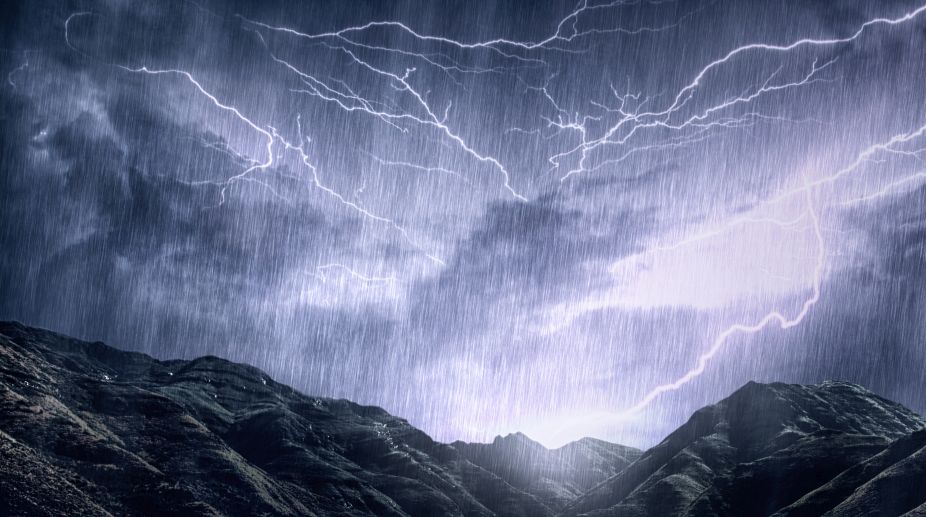People who live and work along coastlines may be more likely to experience a super-charged lightning strike, researchers including one of Indian origin have found.
The research from Florida Institute of Technology in the US shows that lightning can be much more powerful over the ocean than land.
Advertisement
This new understanding of the nature of lightning could inform how off-shore infrastructure and vessels are to be built to minimise the risk of super-powerful lightning bolts from thunderstorms formed over the sea, researchers said.
Assistant Professor Amitabh Nag and Professor Kenneth L Cummins, from Florida Tech, analysed lightning over parts of Florida and its coasts using data provided by the US National Lightning Detection Network.
Some previous indirect observations led scientists and others to believe that strikes over sea water tend to be more powerful, but the new study published in the journal Geophysical Research Letters, represents the first time that an independent measurement has validated those beliefs.
In their study, which measured peak currents of various cloud-to-ground lightning strikes over land and ocean from 2013 to 2015, researchers calculated the duration of the "negative stepped leader" – the electrical channel that moves down towards ground from a thundercloud.
When this leader touches ground a surge of current, typically with a peak value of around 30 kilo amperes, flows upward to the cloud.
The durations of negative stepped leaders over the ocean were significantly shorter than those over land, which indicates that they carry more charge in them.
This leads to a higher following current surge from ground, researchers said.
Nag and Cummins found that with strikes over water in western Florida, the median stepped-leader duration was 17 per cent shorter over ocean than over land, and in eastern Florida the median durations were 21 and 39 per cent shorter over two oceanic regions than over land.
Using a relationship between leader duration and lightning peak current derived in the study, the researchers estimate that lightning with peak currents over 50 kilo amperes is twice as likely to occur in oceanic thunderstorms.
These findings suggest that people living on or near the ocean may be at greater risk for lightning damage if storms develop over oceans and move on-shore.









